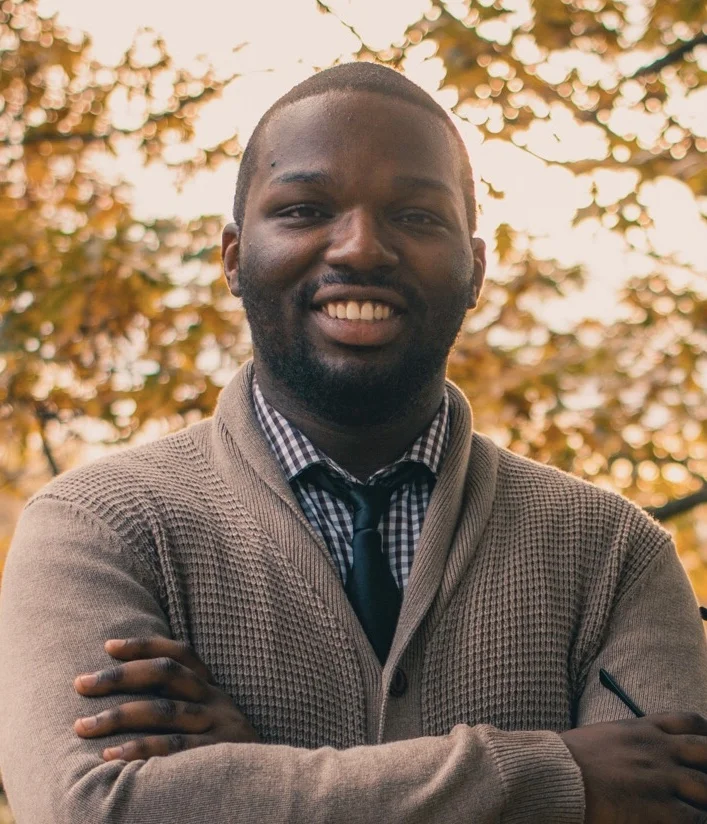"So Breaks the Sun"
By Shavon Lloyd
When did you start composing? How would you describe your composition style?
I began composing at 16, entering my first ever composition in the Manhattan Choral Ensemble’s annual contest, “New Music for New York”. My choral piece, “Untitled”, won the grand prize of the competition. After that moment, I felt compelled to study composition, along with music education at the Crane School of Music at SUNY Potsdam.
I would say that my compositional style is based on thematic material that is fairly simple, while finding complex ways, both harmonically, rhythmically, and texturally, to create an engaging experience for the audience and the singers. I love large, sweeping gestures, harmonies that showcase the range and tone color of a choir, and rhythmic variations that help drive a piece forward. All of my pieces have been programmatic, finding new and interesting ways to communicate a story or evoke a powerful image for listeners.
What influences your composition style (genres, instruments, composers, etc.)?
Composers like Morten Lauridsen, Jake Runestad, Daniel Brinsmead, Ralph Vaughan Williams, Rosephanye Powell, and Moses Hogan, continue to spark my interest in choral composition. Lauridsen’s “Sure on this Shining Night,” and, Brindsmead’s “Trees,” are two pieces that influence the simpler side of melodic/thematic material for me. Runestad’s music is always pushing the boundaries for harmonic and textural colors in choirs. His “’Let My Love Be Heard,” and “Nyon Nyon,” continue to inspire me. Powell and Hogan create a lot of energy with their music. Whether the piece is fast or slow, they find a way to use the text, harmonic progressions, and rhythmic variation to keep the energy in a piece moving forward. Powell’s “The Word was God,” and Hogan’s “My Soul’s Been Anchored in the Lord,” really highlight these characteristics and strongly influences my composition style. Vaughan Williams is a very important influence on my compositional style. As I write this, I am also preparing to perform his “Dona Nobis Pacem,” which is truly breathtaking. In this piece, he uses brilliant thematic material and orchestration to show us his plea for peace as the second World War approached. I find myself crying every time we’ve rehearsed it. It’s a beautiful representation of programmatic material that really connects with the performers and the audience. This attribute is something I continue to strive for as a composer.
How do you choose texts for your pieces?
When choosing texts, one question I ask is, “Is this sing-able?” I know that sounds obvious, but I think it’s important to be able to read through texts and find the music in them. I also choose texts where I can truly empathize with the poet. If I can’t understand the feeling that is being conveyed, or comprehend the story in the text, I won’t set it. That component of selecting poems is what makes choral composition so personal and exciting.
What do you enjoy most about composing for voices?
Choral music holds a special place in my heart. I continue to be amazed by the variety of sounds that a choir can create. When writing for voices, I love creating those moments where the voices can really shine. Whether it’s close harmony, big open chords, or monophonic textures, playing with the different abilities of the choir has always been a huge pleasure for me. And of course, as a young composer, I love hearing my works come to life. There is no better feeling than putting music to paper and having it performed in real time by beautiful choral ensembles.
Tell about your piece. Is it similar to other pieces you’ve composed?
So Breaks the Sun is my choral setting of Ben Jonson’s beautiful poem of the same name. In his text, he describes the long-awaited transition from winter to spring. He makes a point to share the good things that come with spring, while also reflecting on the characteristics of winter. To me, this text goes further than just the change in season. I believe it is metaphorical for leaving a cold place in your life to a place of warmth, light, and happiness.
I wrote my own text to give the piece more of a transition from cold to warmth and light. My text reads, “The night is dark and cold, the Earth is fettered with snow, and the chill of the air confines me to sorrow.” Again, this is in congruence with the idea of the metaphorical traits of winter that Jonson portrays. From this, I was able to capture a sense of jubilation when arriving at the section of the piece where the choir finally sings, “So breaks the sun…”
In this piece, I utilize a lot of close harmonies and chords that represent all of the emotions this poem has to offer. To illustrate a sense of jubilation and relief, I used an exciting ostinato that occurs throughout the piece on the text, “so breaks the sun.” I also made sure to capture mood changes with striking harmonic and textural shifts in the music.
So Breaks the Sun is unlike any piece I’ve written. I spent a lot of time focusing on the themes and emotions that Jonson communicated, used his beautiful language and applied my own musical syntax to create this composition. This is one of the very few times where I completely surrendered myself to the text and I am truly excited to hear it come to life when the amazing 18th Street Singers premiere it in June.
-------------------------------------------------
Hear Shavon's winning composition June 16th at Dupont Underground and June 17th at Church of the Epiphany. Tickets available now!
June 16th tickets: https://www.ticketfly.com/purchase/event/1704320?utm_medium=bks
June 17th tickets: https://www.eventbrite.com/e/soundscapes-18th-street-singers-spring-concert-sunday-evening-tickets-45830595545
